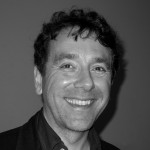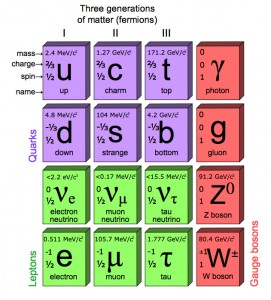October 29, 2012
Discovery at the Energy Frontier with the Large Hadron Collider
Professor Jon Butterworth
Report by: Chris Sutcliffe
Jon Butterworth is Professor of Physics at University College London, and a leading member of the High Energy Physics group on the ATLAS experiment at CERN (European Organization for Nuclear Research).
Jon made his first visit to the Flamsteed to talk about the latest discoveries at CERN, focusing primarily on the latest update in the search for the Higgs boson.
Jon first said that this is the biggest scientific experiment ever, using the Large Hadron Collider (LHC), which is the world’s largest particle accelerator, located near Geneva on a site 27 km in circumference, equivalent to the Circle Line on the London Underground.
As the super high-energy Protons within the particle accelerator want to go in straight lines, it is necessary to act on them with a force to make them bend around and the 27 km tunnel contains some of the most powerful super-conducting magnets in the world to achieve this aim. Some of these magnets failed in 2008, causing a helium gas explosion that put the LHC out of action for over a year.
There are 6 experiments at the LHC and Jon works on one of the two large experiments, ATLAS, which is a cylindrical detector, the size of a 5-storey building, designed to measure particle charge and momentum following the collision of high-energy protons. Only a tiny percentage of the billion collisions that occur each second are flagged as potentially interesting and recorded for further study, while all the others are rejected.
Jon explained that in the Standard Model, there are currently believed to be three types of elementary particles: quarks, leptons, and bosons. Quarks and leptons make up everyday matter, which is held together by bosons. The bosons carry the forces. By way of example, in the atom, the exchange of photons holds the electron and nucleus together and all fundamental forces involve the exchange of a fundamental particle. The way these particles combine dictates the structure of matter.
In the Standard Model, the photon has no mass, while the W and Z bosons are very heavy. Because the Higgs boson is a very massive particle and also decays almost immediately when created, only a very high-energy particle accelerator can observe and record it. On 4 July 2012, the two main experiments at the LHC reported independently that they found a new particle with a mass of about 125 GeV (about 133 proton masses).
It is important to note that dark matter has not yet been detected at CERN, but the search continues. Also missing is a ‘carrier particle’ for gravity (‘graviton’), though, since this is a very weak force, the Standard Model still works well without a full description of the nature of gravity.
Jon concluded his lecture by returning to a list of questions that he hoped would be answered by the LHC. He wrote these questions 2 years ago. These were:
- How well will the Standard Model work above the electroweak symmetry breaking scale? This is what Jon has spent the last 2 years doing
- Why do the W and Z bosons have mass, while the photon is massless and where does the mass come from? It very much looks like this is due to the W and Z bosons mixing with the Higgs field and acquiring mass.
- There may be more new particles and forces. The Higgs doesn’t explain why the particles take the mass they have, it just allows them to have mass, so there may be more to the theory yet to be discovered.
- There has been no sign of supersymmetry detected by the LHC, but it may still show up.
- We may see possible new dimensions in space-time, with mini-black holes and quantum gravity.
So, the Higgs boson, far from being the end of the story, is actually the beginning of doing new physics in this fundamentally new regime.
The presentation was rounded off with a question and answer session.
Pictures from the evening (by Grey Lipley):
Posted under: Flamsteed, Flamsteed Lecture, Meeting Report
















You must be logged in to post a comment.